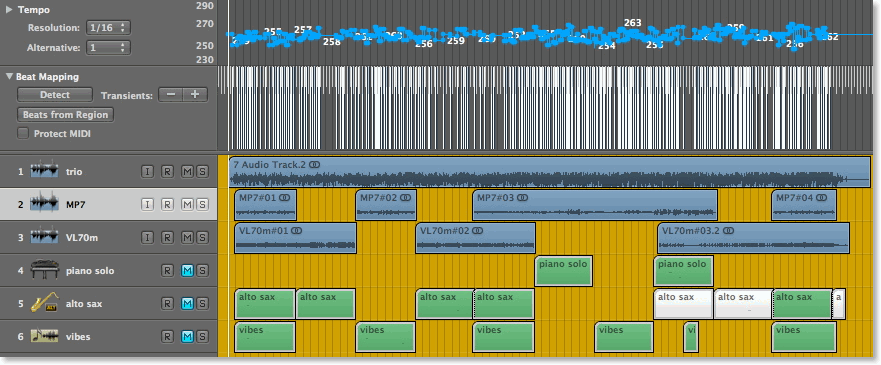Alto-itis (fake but accurate version)
05 December 2014 Filed in: Music
Listen to Alto-itis (fake but accurate version)
This piece written by Oliver Nelson (who shared the same birthday with my mother!) was recorded with Eric Dolphy in 1960.
I started thinking about playing it when recently I read (one more time): “Eric Dolphy: A musical Biography & Discography” by Simosko and Tepperman.
I have been a fan of Dolphy’s music for a long time! At first I thought of somehow trying to reproduce Dolphy’s style but that’s way beyond my reach so I went for something more “mainstream”.
I have Aebersold’s volume 73 dedicated to Oliver Nelson, so I imported the backing track of this piece to Logic Studio and synchronized it, with the Beat Mapping function, to the sequencer.


It took me some time because tempo is not steady, as always when music is played by humans, in this case by Andy LaVerne (p); Lynn Seaton (b) and Steve Davis (d).
Once the backing track was finally synchronized to the sequencer I could easily play (and edit) MIDI tracks on top of it.
The truth is that I had to slow down the tempo to be able to improvise on it and for this reason I had created a MIDI backing track (that you do not see on the above picture), so the trick was to record solos with the MIDI backing track at a slower tempo (with the audio backing track muted) then listening to the solos at the speed of the audio backing track (with the MIDI backing track muted) to see if they made sense at a higher speed.
This way I could edit durations, erase or quantize notes and do any possible MIDI trick and always be in sync with the audio backing track.
I tried improvising in and out of chord changes and I noticed that the most important notes of a sentence are the beginning and end of it. Notes in between can be almost anything as long as the sentence ends on the “right” notes.
I used a Kawai MP7 for piano and vibes sounds and a Yamaha VL70m for the sax sound.


